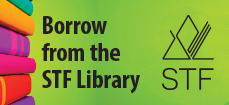Assess personal, societal, and environmental impacts of sound-related technologies.
| (a) |
Explain the purpose and effect of devices (e.g., hearing aid, sonar, amplifier, microphone, oscilloscope, and ultrasound) that enhance the human ability to produce, transmit, and detect sound. |
| (b) |
Explore the use of sound in movies, television, dance, and drama. |
| (c) |
Investigate the type and loudness of sounds heard in various locations in their environment (e.g., classroom, hallway, gymnasium, music room, library, lunch room, and playground). |
| (d) |
Explore the personal and social impacts on humans who are deaf or hard of hearing, including connections to speech and the role of sign language. |
| (e) |
Explain how and why different materials are used in schools and other buildings based on their ability to absorb and/or reflect sounds. |
| (f) |
Demonstrate methods and technologies used to prevent noise pollution in their surroundings, and work with group members to evaluate the effectiveness of those methods. |
| (g) |
Explore the importance and uses of sound in different cultures, past and present. |
| (h) |
Identify positive and negative consequences, for humans and other animals, of technologies (e.g., leaf blower, stereo, car horn, motors, and fireworks) that produce sounds. |
| (i) |
Identify issues related to sound such as long-term exposure to environmental noise, portable music players, and workplace sounds, and discuss the implications of these issues on individuals, society, and the environment. |
| (j) |
Explain practices that help meet the need for protection from loud and sustained sounds to prevent short- and long-term hearing loss in humans. |
| (k) |
Research the contributions of Canadians who contributed to the development of sound-based technologies. |





The book includes suggested activities, a table of contents, a glossary and an index.




